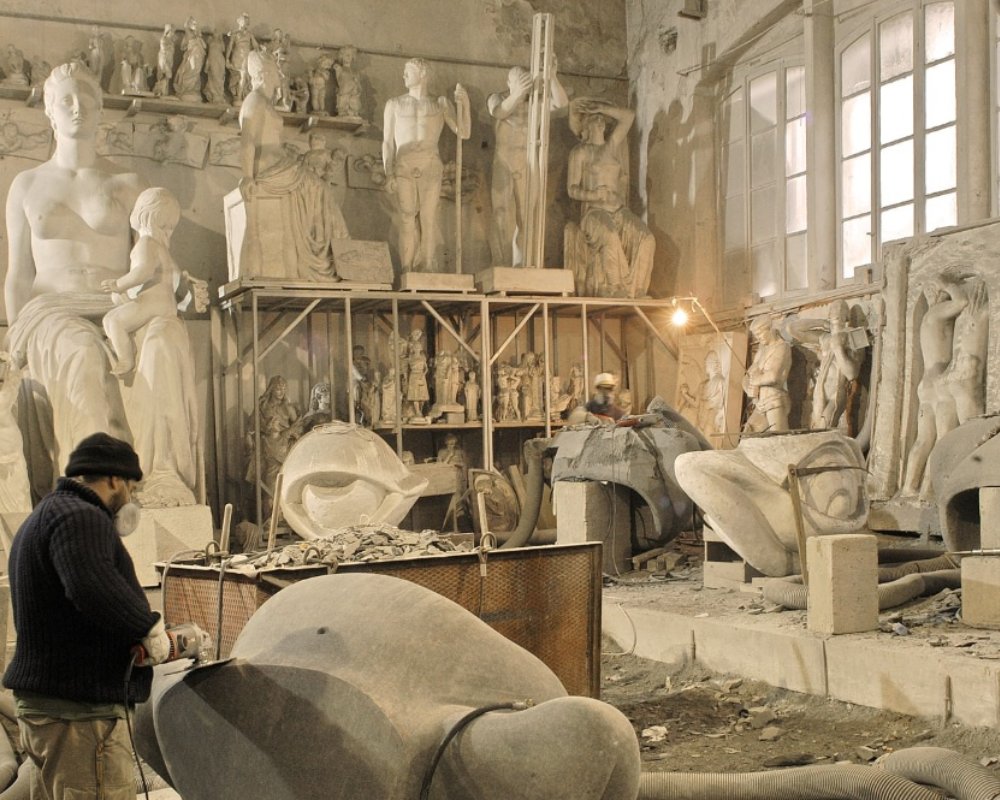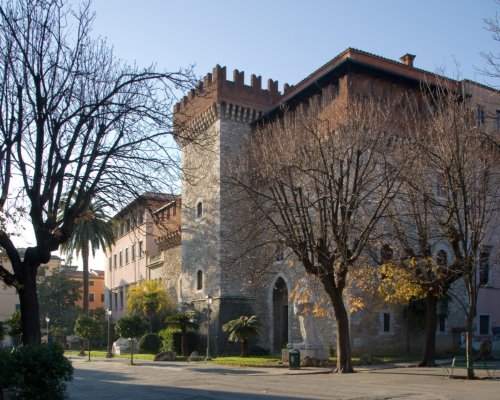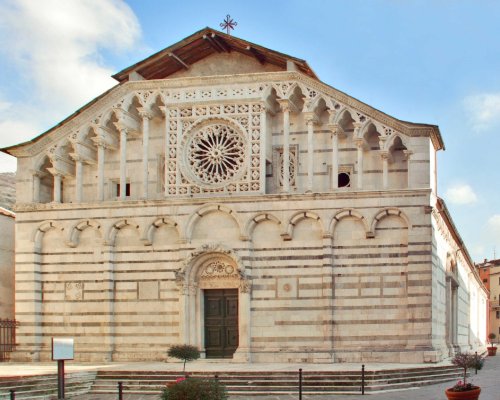


Take a stroll in the city of "white gold"
Carrara, the world capital of marble, is a small town centre full of surprises that can be discovered with a short and nice walk.
Its origins are naturally linked to the marble quarries, already exploited in Roman times, to extract what in these parts is significantly defined as "white gold" and which has in fact never ceased to attract famous artists throughout the ages.
From the square head northeast on Via Roma to reach the ancient historic center. At the crossroads with Via Verdi we find the Accademia di Belle Arti and former residence of the Cybo Malaspina family, one of the area’s most notable noble families. A monument to Carrara sculptor Pietro Tacca, by Carlo Fontana, stands in front of the palazzo.
On the right you find Piazza Gramsci, once Piazza d’Armi and the prince’s gardens, used as public gardens in the 19th century and now decorated with a fountain and some monuments dedicated to the anarchical trade unionist Meschi di Pietro Nelli, Pellegrino Rossi and the philosopher Angelo Pelliccia.
From the square head northeast on Via Roma to reach the ancient historic center. At the crossroads with Via Verdi we find the Accademia di Belle Arti and former residence of the Cybo Malaspina family, one of the area’s most notable noble families. A monument to Carrara sculptor Pietro Tacca, by Carlo Fontana, stands in front of the palazzo.
On the right you find Piazza Gramsci, once Piazza d’Armi and the prince’s gardens, used as public gardens in the 19th century and now decorated with a fountain and some monuments dedicated to the anarchical trade unionist Meschi di Pietro Nelli, Pellegrino Rossi and the philosopher Angelo Pelliccia.
At the bottom of a starway is the Chiesa del Suffragio, now a deconsecrated church that hosts temporary exhibits. Continuing along the road beside the large wall of Piazza Gramsci you reach Piazza dell’Accademia, at the centre of which you find a monument to Mazzini (1892); on the right stands the 18th-century Palazzo Rosso, the former Accademia headquarters.
The lower portion of the piazza is occupied by the 16th century Chiesa del Carmine whose main door features a Madonna and Child by Bartolomeo Ordoñez. The interior features an altar dedicated to the Virgin of Carmelo (in polychrome marble with a 16th century painting) and an altar dedicated to Santa Maria Maddalena dei Pazzi (16th century).
In front of the Chiesa del Carmine is one of the most ancient and characteristic streets of the medieval city, via Santa Maria. Most notable of all of the houses is number 14, which belonged to Emanuele Repetti who supposedly hosted Petrarch in 1343. The marble facade features several medieval bas-reliefs, including the coat of arms of Carrara (the wheel), which is why it is believed that the building was home to the first council offices (13th century).
At the bottom of a starway is the Chiesa del Suffragio, now a deconsecrated church that hosts temporary exhibits. Continuing along the road beside the large wall of Piazza Gramsci you reach Piazza dell’Accademia, at the centre of which you find a monument to Mazzini (1892); on the right stands the 18th-century Palazzo Rosso, the former Accademia headquarters.
The lower portion of the piazza is occupied by the 16th century Chiesa del Carmine whose main door features a Madonna and Child by Bartolomeo Ordoñez. The interior features an altar dedicated to the Virgin of Carmelo (in polychrome marble with a 16th century painting) and an altar dedicated to Santa Maria Maddalena dei Pazzi (16th century).
In front of the Chiesa del Carmine is one of the most ancient and characteristic streets of the medieval city, via Santa Maria. Most notable of all of the houses is number 14, which belonged to Emanuele Repetti who supposedly hosted Petrarch in 1343. The marble facade features several medieval bas-reliefs, including the coat of arms of Carrara (the wheel), which is why it is believed that the building was home to the first council offices (13th century).
Continuing along the medieval road we come to Piazza del Duomo, home to the splendid Carrara cathedral, dedicated to Saint Andrew the Apostle.
Via Ghibellina lies in front of the Duomo’s façade; take the small street to the right which leads to the Via Carriona, home to the church of Santa Maria delle Lacrime, the former hospital of Saints James and Christopher and the church of the Madonna delle Grazie.
Via Carriona is an ancient street used to transport ox-driven carts loaded with blocks of marble coming from the town’s quarries. Along this street you can still see the old workshops.
Continuing along via Ghibellina, you reach the old Piazza Alberica, created in the late 1600s by Alberico I on the remains of what was previously the Foro Boario, namely the market square.
Continuing along the medieval road we come to Piazza del Duomo, home to the splendid Carrara cathedral, dedicated to Saint Andrew the Apostle.
Via Ghibellina lies in front of the Duomo’s façade; take the small street to the right which leads to the Via Carriona, home to the church of Santa Maria delle Lacrime, the former hospital of Saints James and Christopher and the church of the Madonna delle Grazie.
Via Carriona is an ancient street used to transport ox-driven carts loaded with blocks of marble coming from the town’s quarries. Along this street you can still see the old workshops.
Continuing along via Ghibellina, you reach the old Piazza Alberica, created in the late 1600s by Alberico I on the remains of what was previously the Foro Boario, namely the market square.